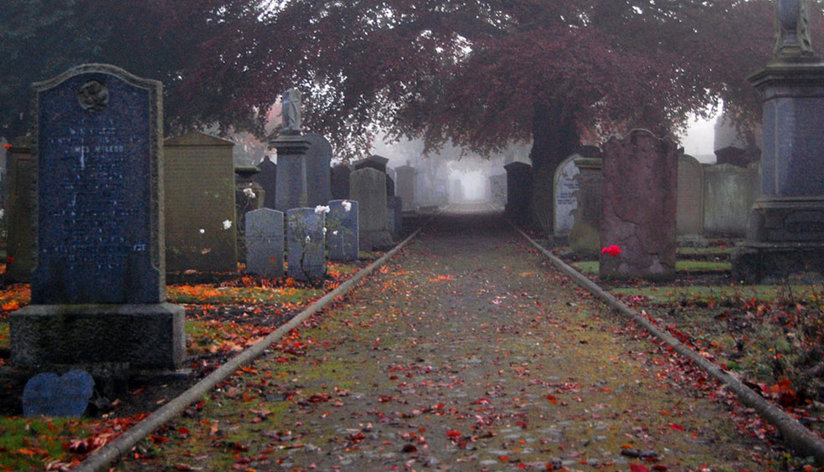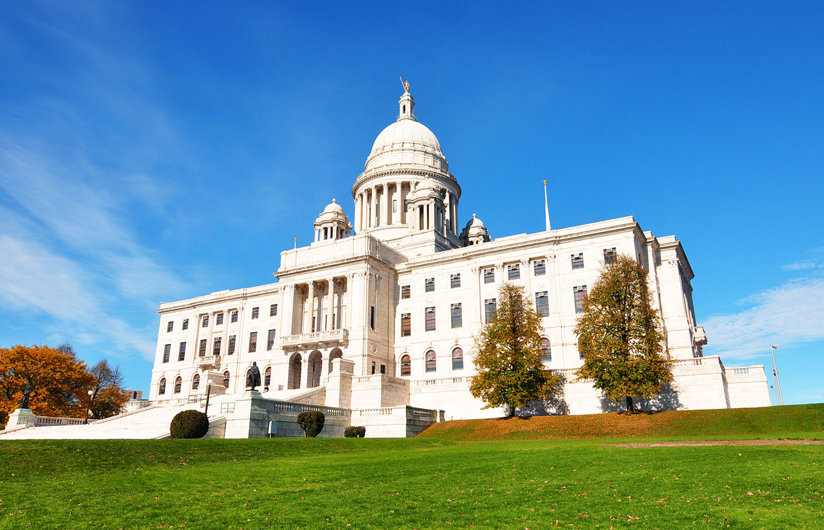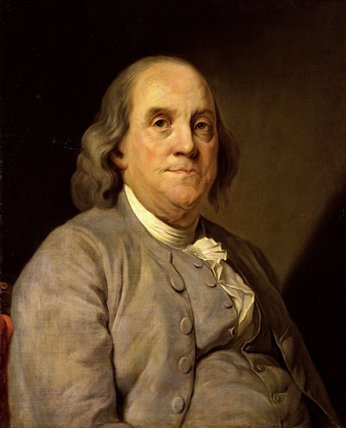The Path to Violence Is Paved With Lies
In the early 1830s, tales circulated in the Boston area of sinister doings at a convent and private school in the nearby town of Charlestown. A local girl who trained to be a nun for a brief period left and wrote a sensational account of harsh treatment followed by an “escape.” Then, in July of 1834, an overworked nun left the convent, and showed up at a local house in a state of hysteria. She quickly recovered and returned to the convent (and spent the rest of her life as a member of her order), but the story spread fast with embellishments which seemed to give credence to the lurid tales of abuse. A few weeks later, a drunken mob showed up on an August night and, after breaking down the convent’s doors and windows, set fire to its buildings, even desecrating the graves of sisters buried on the property. The nuns and their pupils were forced to flee for their lives. The convent was never rebuilt.

It’s often been said that hate speech can breed hatred which can lead to violence. But what might not be so evident is the connection between specific instances of denigration of an individual or group and later destructive acts perpetrated against that individual or group. Anti-Catholicism had been part of the American landscape, particularly in New England, since the founding of the first colonies. But the nuns had been able to found their convent and operate it for several years until willful falsehoods made some townspeople erupt into mob violence.
The forwarding of malicious lies also figured prominently in violent persecution of the Quakers in Massachusetts several centuries prior to the attack on the convent. The Quaker movement had originated in England and its followers quickly spread throughout the country and into the colonies. They met much resistance because of their teachings, most notably that each individual should rely on his “inner light” rather that the Bible as interpreted by the clergy as the source of religious truth.
What is not as commonly mentioned is that the Quakers were the subject of an intense campaign of vilification which reached Massachusetts before they did.
Nowhere, however, were they met with more hostility than in Massachusetts. Beginning with the arrival of the first Quaker missionaries in 1656, Quakers were whipped, jailed, subject to physical mutilation and, in four cases, hanged for no other crime than publicly proclaiming their religious beliefs and refusing to stop. At one point, the King of England personally ordered the officials of the colony to end the brutality. The hangings stopped but were replaced with the “Cart and Whip Act” by which Quakers were whipped from one Massachusetts town to another until they were out of Puritan jurisdiction. Many suffered their whippings only to return. The Quakers ultimately outlasted the cruelty of their oppressors. By the end of the 17th century, Quakers and other minorities were no longer abused and gradually became accepted members of society.

The Puritan colony had been founded on the basis that all religions other than their own version of Christianity were heresies not to be permitted in their midst, which would have immediately prejudiced them against the Quakers. In previous years, Massachusetts had exiled such well-known dissidents as Roger Williams and Anne Hutchinson for daring to question their orthodoxy. Williams founded Rhode Island as a haven for full religious liberty, providing a home for some of those New England cast-outs. A few years before the Quakers arrived, a Baptist was whipped for conducting a service in a Baptist home and one of the early presidents of Harvard was forced to resign for endorsing Baptist beliefs.
And yet the Puritans virulent treatment of the Quakers went way beyond the persecution that they inflicted on any other dissident individual or group. There is certainly some truth in the most common explanation that the Quakers’ uncompromising insistence on being allowed to openly disseminate their beliefs and challenge the beliefs of others sent the authoritarian Puritan power structure over the edge.
What is not as commonly mentioned is that the Quakers were the subject of an intense campaign of vilification which reached Massachusetts before they did. Consider the pamphlet A Brief Relation of the Irreligion of the Northern Quakers published in 1653 in London and which probably made it to New England shortly before the arrival of the first missionaries. In it, the Quakers were accused of being possessed by Satan, and in regular communication with him. The pamphlet argued that their behavior presaged the coming of the Anti-Christ. Their founder, George Fox, was accused of being a male witch. Many other accusations were hurled at the Quakers in this and other pamphlets which preceded the attempts to destroy and harm them.
It is not “normal” for people to hate each other because they look different, come from a different place or have different ideas about the ultimate nature of God and the universe.
Any discussion of the relationship of hate speech to violence would have to consider anti-Semitism, which has long been one of the darker aspects of Western civilization. Sometimes it has reflected itself in relatively “minor” ways like social ostracism but it has also resulted in horrific acts of which the Holocaust is the worst example. Somewhere in between in the level of severity is the spate of violent attacks that occurred against Jews in the United States, mostly New York and Boston, in the late 1930s and early 1940s, ironically at exactly the time when the country was preparing to battle the Nazis. There were many incidents of gangs beating up individual Jewish boys and men, vandalizing businesses, ripping clothes off girls and desecrating synagogues and Jewish cemeteries. The main catalyst was a vicious piece of propaganda called Protocols of the Elders of Zion, claiming to be an inside account of a Jewish attempt to dominate the world. Though exposed many times over as a forgery, after initially being published in Russia, it made its way to the United States by around 1920 and was disseminated by the Ku Klux Klan, the automaker Henry Ford, and an incendiary Catholic priest named Father Coughlin. It was the latter whose inflammatory words appear to have been the immediate provocation for the marauding bands.
Historical accounts of the above persecutions often make them seem inevitable—what naturally happens when two different world views or ethnic groups collide—but they were not. It is not “normal” for people to hate each other because they look different, come from a different place or have different ideas about the ultimate nature of God and the universe. Hate arose and erupted into violence in each of the above situations because individuals created malicious and denigrating falsehoods and others chose to believe and act on them. Imagine if the Massachusetts Puritans had said to each other, “those Quakers are devout, inflexible and strong-willed—just like us.” Or if the people of 19th-century Boston had stopped to notice the good which Catholic nuns were doing in their community. Or if anyone promoting or acting on the falsehoods of Protocols of the Elders of Zion had stopped to observe how utterly devoid of fact the work was. As has been too often the case when hate gets out of hand, the willingness to look and observe seems to get lost.
Unfortunately, bigotry and the reactions that it generates are not simply a matter for the history books. If you look elsewhere on this website you will find an account of violence against the Jehovah’s Witnesses which began directly following a series of media attacks emanating from professional denigrator Leah Remini. As covered here, the FBI reported 5,818 hate crimes for 2015, 20 percent of them due to the victim’s religions. You will also see that Scientologists have been on the receiving end of violence and hate crimes as well. A difference between some of the current violent attacks and those of the past, is that some of the hate speech leading to it is finding a home on major media.
There will always be those who hate and who spread venom. That is no reason why the rest of us should believe it or act on it. The media, whether they like it or not, have a tremendous responsibility to provide the information that the citizens of a free society need in order to participate in political, economic and social activities without spreading malice which undermines the ability of diverse groups and individuals to live and work together.

Ben Franklin, a pioneer in newspaper publishing when there were no competing forms of media, recognized this responsibility. Criticized for publishing an advertisement which disparaged Anglican clergymen, he publicly apologized. His apology, written in 1731, also explained in detail that newspaper publishers have a responsibility to make their space available to holders of many different opinions which, of necessity, would involve people criticizing and strongly disagreeing with each other. But he also recognized that press freedom carried with it press responsibility:
“I myself have constantly refused to print anything that might countenance Vice or promote Immorality; tho’ by complying in such Cases with the corrupt Taste of the Majority, I might have got much Money. I have also always refus’d to print such things as might do real Injury to any Person, how much soever I have been solicited, and tempted with Offers of great Pay; and how much soever I have by refusing got the Ill-will of those who would have employ’d me.”
Unfortunately, it seems that all too often in our own and other times, the desire for “great pay” and the approval of those who hate have transcended the responsibility to protect people whose only crime is to live a different life.
But I believe that the human race is better than that. Yes, I have seen plenty of instances of prejudice and intolerance and I know they can be ugly. On the other hand, I have observed far more instances where people have truly cared about each other, and lived and worked together despite differences. And so I believe we can learn to observe and truly communicate with each other and so create a world based on mutual tolerance and respect.










